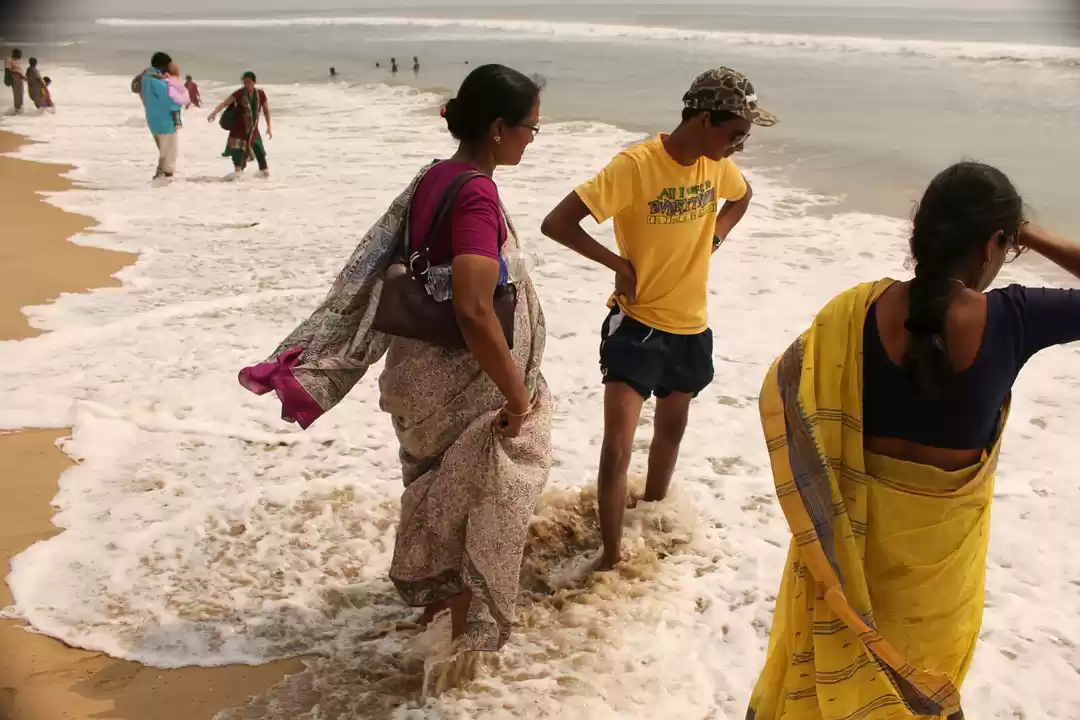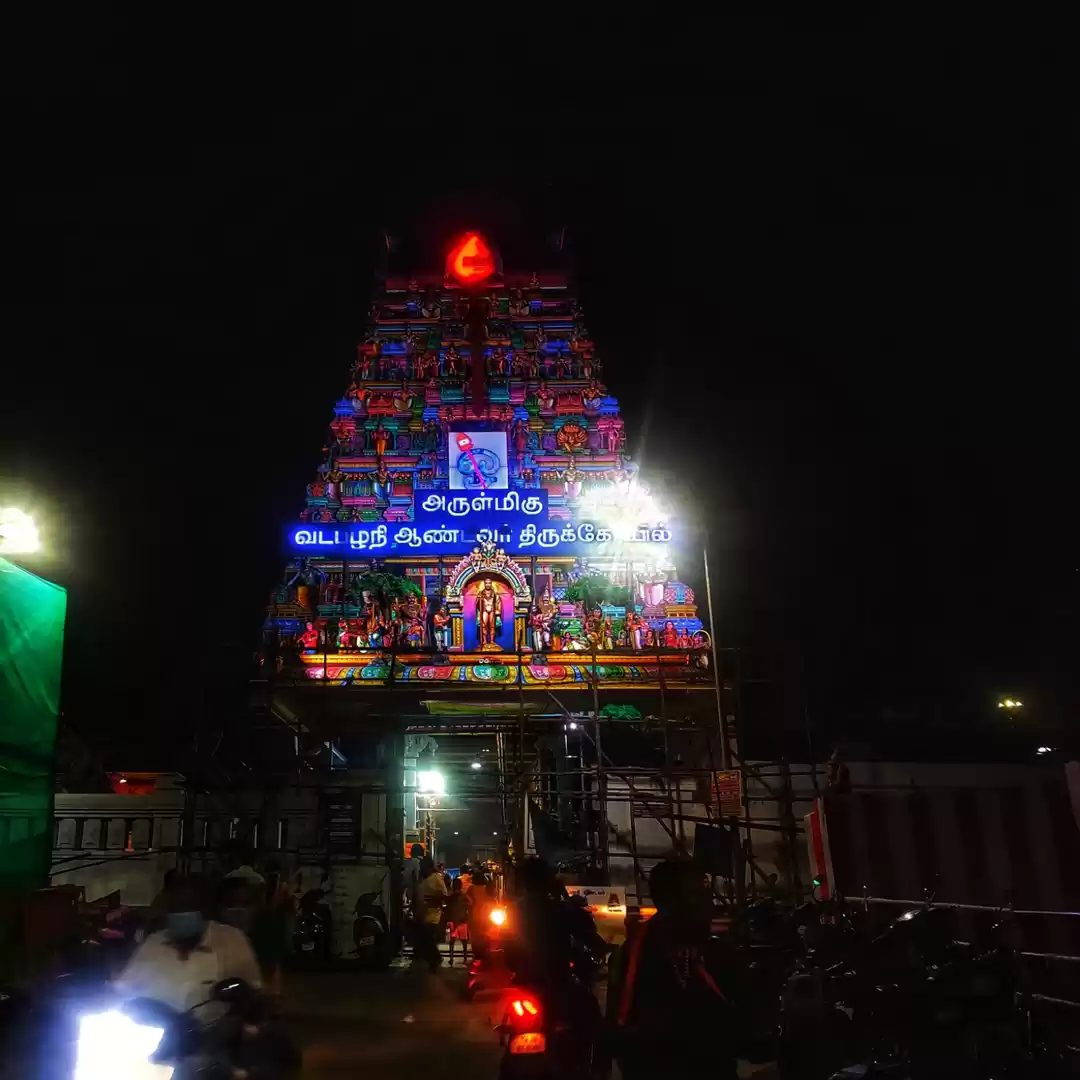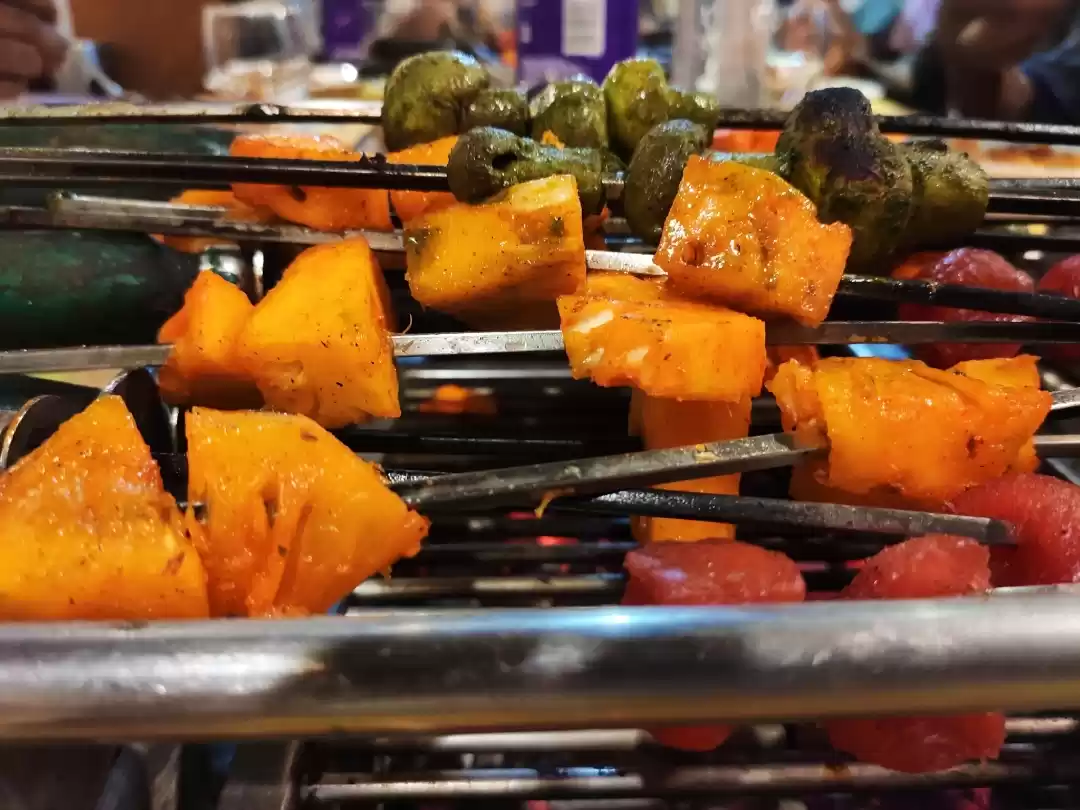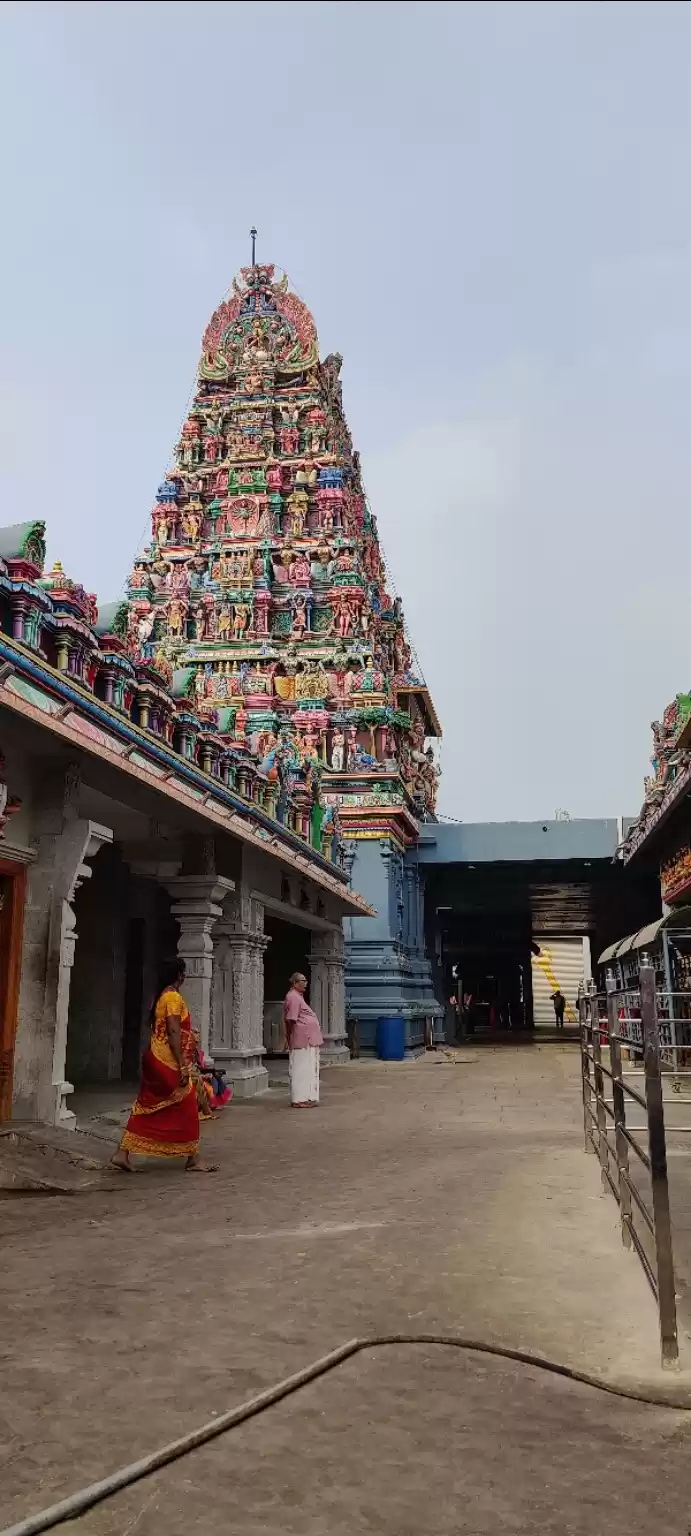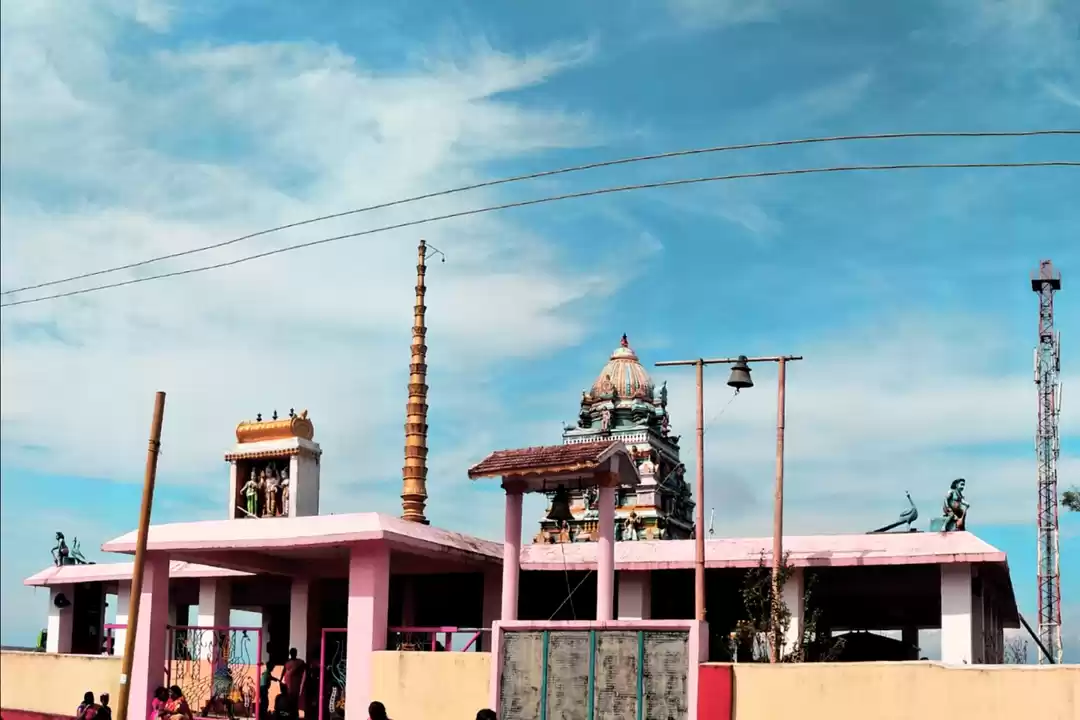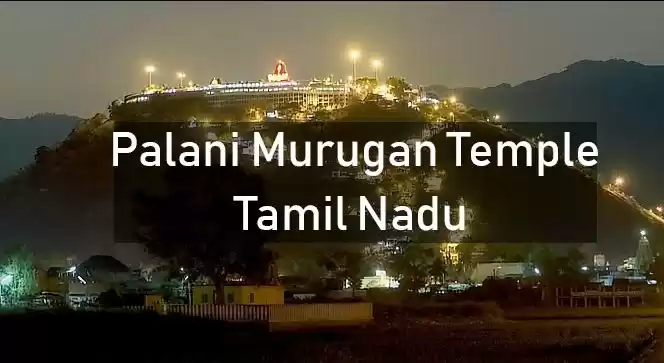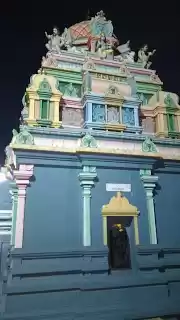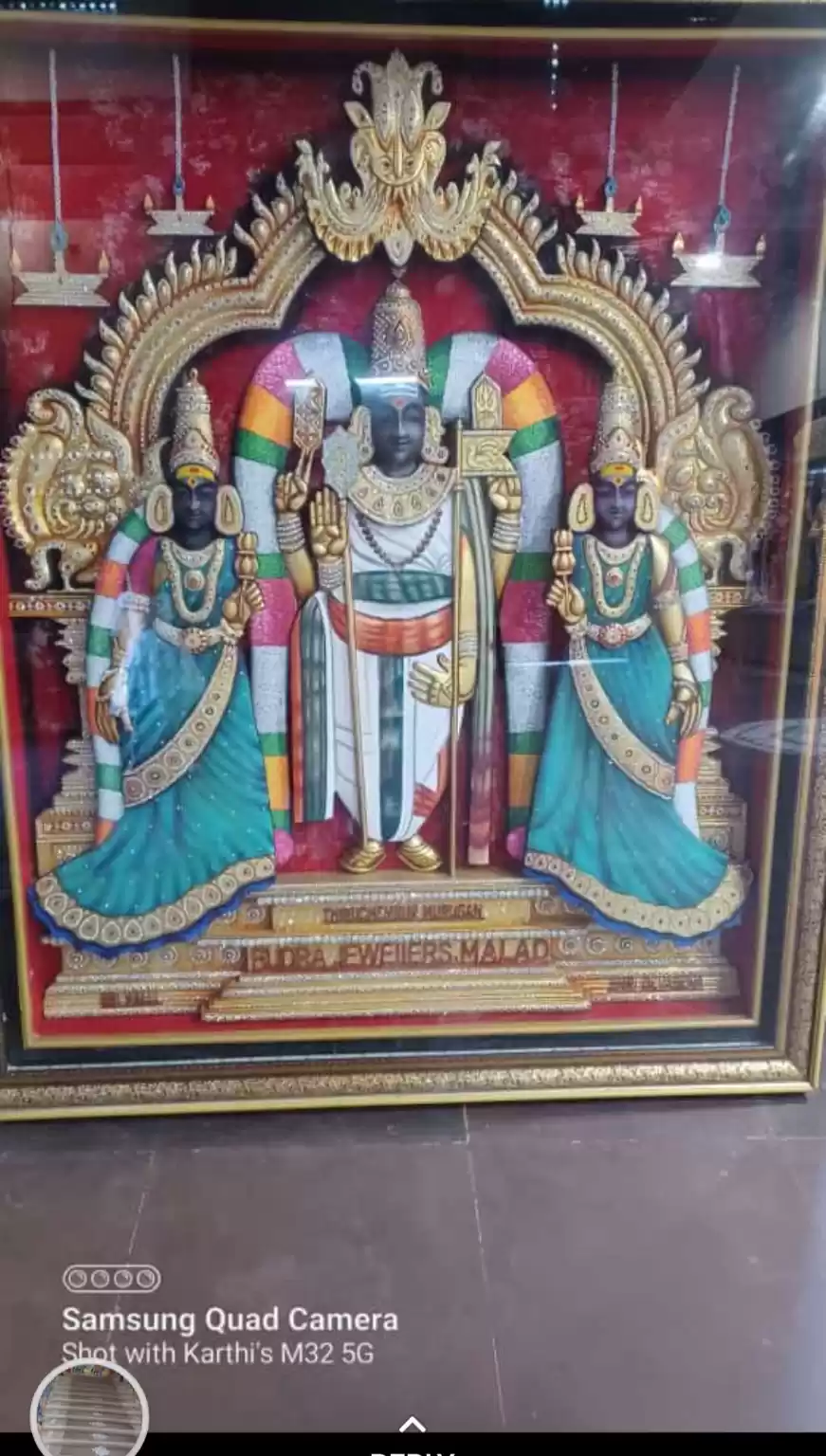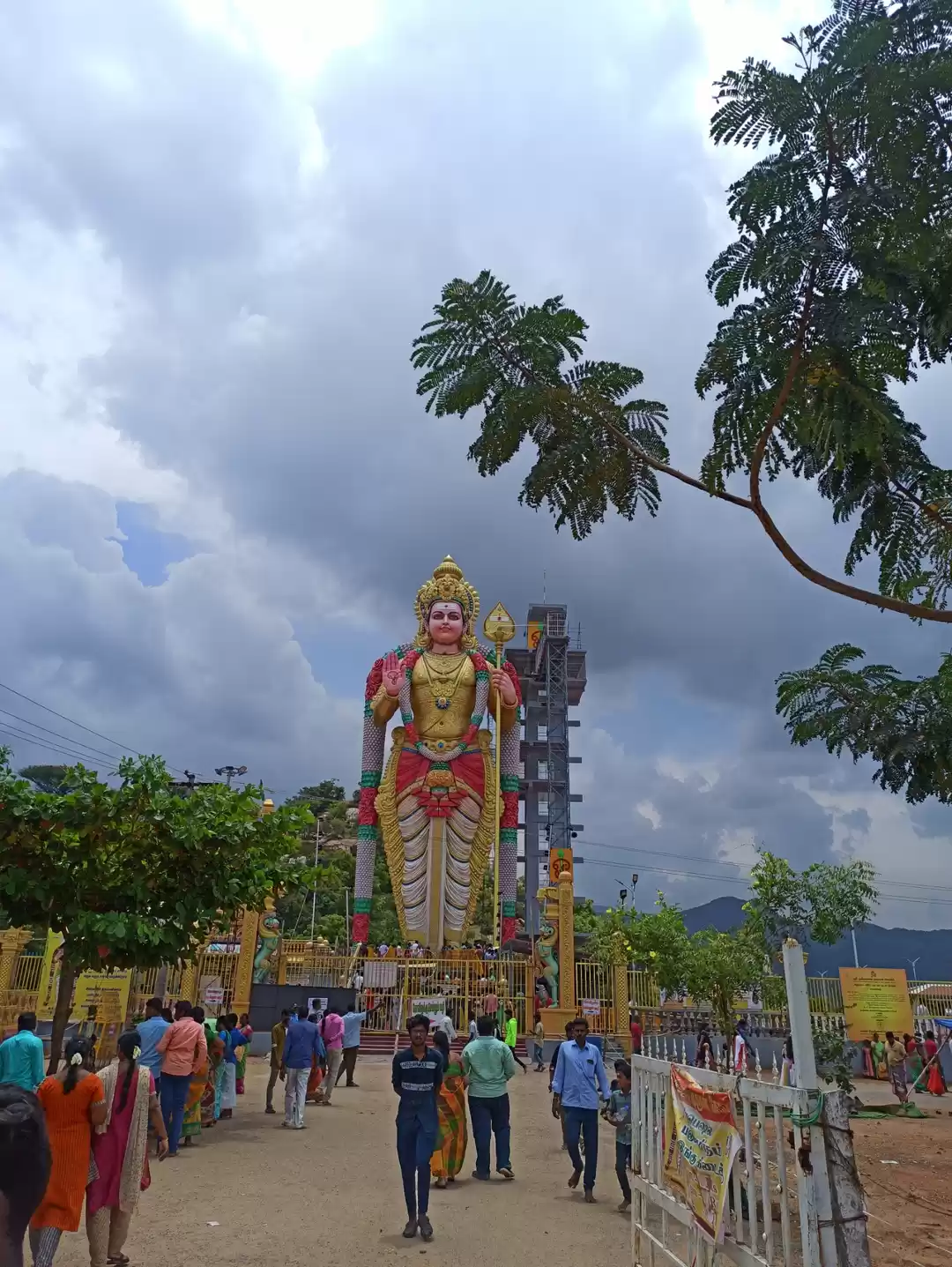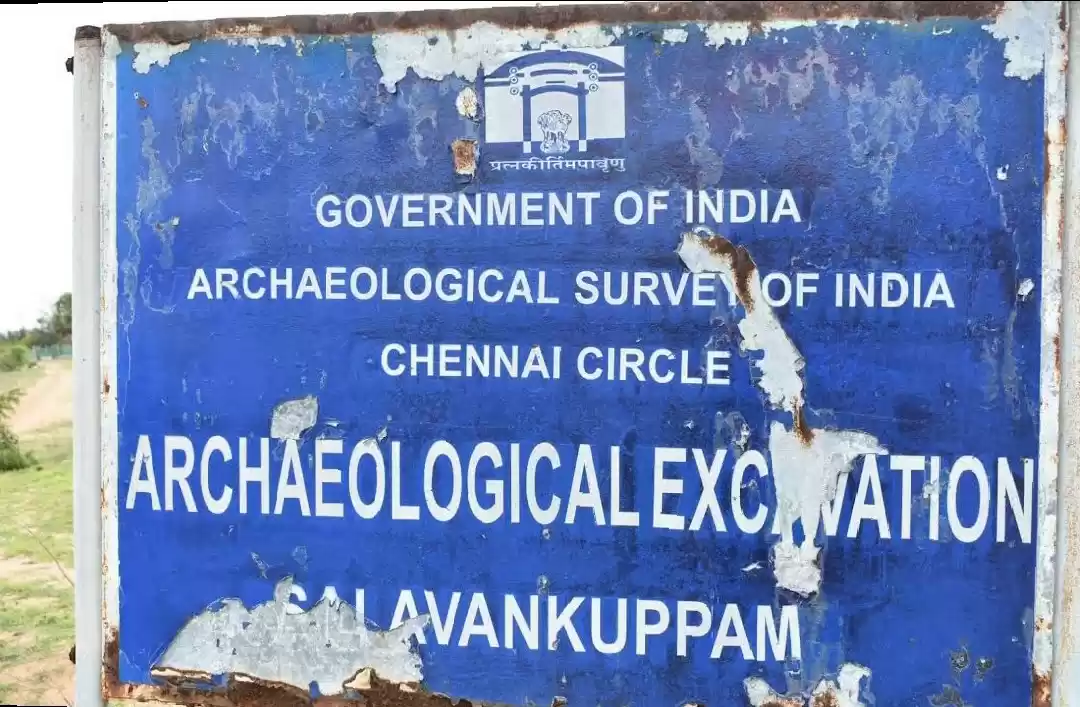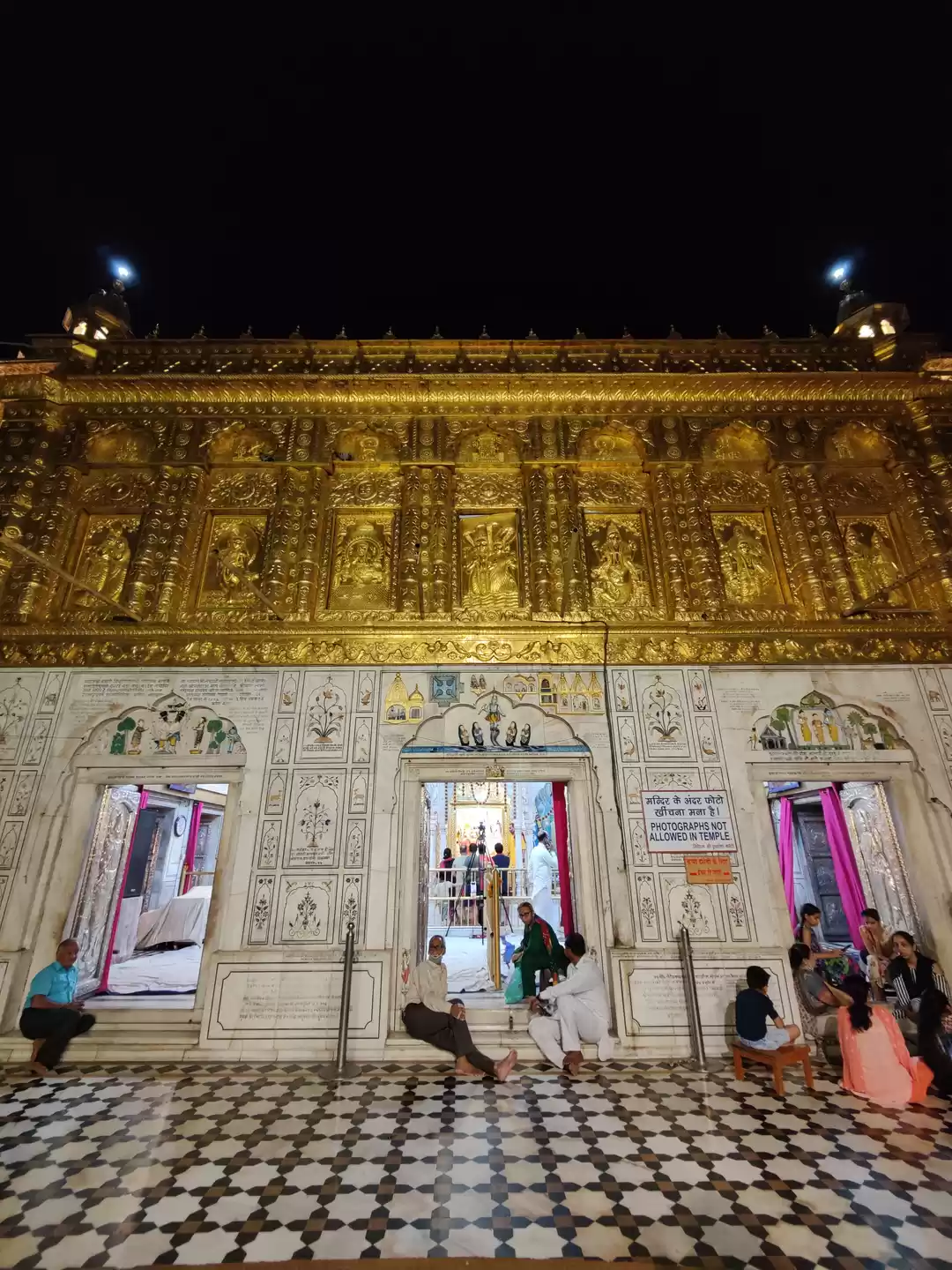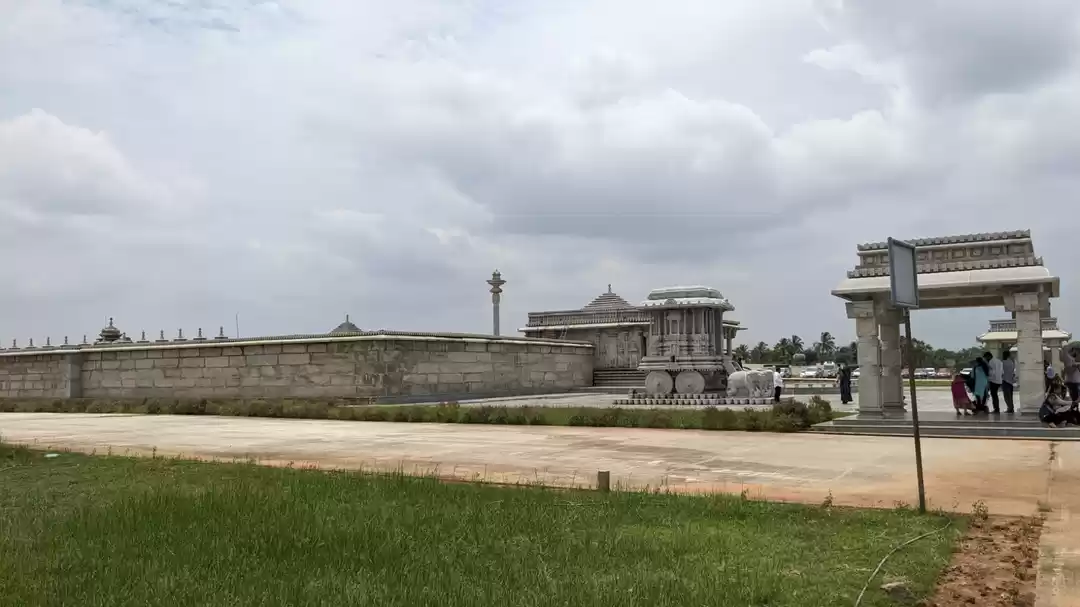Are you looking for a spiritual and cultural experience in Chennai? Do you want to visit one of the most popular and sacred temples in the city? If yes, then you should not miss the vadapalani murugan temple, a magnificent shrine dedicated to Lord Murugan, the son of Lord Shiva and Goddess Parvati. In this article, we will provide you with comprehensive and updated information about the temple, its history, significance, features, festivals, miracles, timings, entry fee, location, and nearby places to visit. Whether you are a devotee, a tourist, or a curious traveler, you will find something interesting and inspiring in this temple. Read on to discover why the vadapalani murugan temple is a must-visit destination in Chennai.
History and Significance of Vadapalani Murugan Temple
The vadapalani murugan temple has a fascinating and miraculous history that dates back to the 19th century. It was founded by a devotee named Annaswamy Naikar, who was a staunch follower of Lord Murugan. He built a small thatched hut in his backyard and installed a picture of Lord Murugan that he had drawn himself. He used to worship the picture daily and offer prayers and offerings to the lord. He also had a remarkable gift of healing, and he cured many people of their diseases and troubles by applying holy ash (vibhuti) on their foreheads. His fame spread far and wide, and soon many people started flocking to his hut to seek his blessings and the grace of Lord Murugan.

As the number of devotees increased, Annaswamy Naikar decided to construct a proper temple for Lord Murugan. He bought a piece of land in Vadapalani, a suburb of Chennai, and built a modest temple with a thatched roof and a brick wall. He also installed a small idol of Lord Murugan, made of navapashanam (a mixture of nine herbs), which he had obtained from Palani, another famous temple of Lord Murugan. He continued to serve the lord and the devotees until his death in 1900.
After his demise, his son and grandson took over the responsibility of maintaining the temple and expanding it. They added more structures and facilities to the temple, such as a gopuram (tower), a mandapam (hall), a prakaram (circumambulatory path), and a tank. They also installed more idols of Lord Murugan and his consorts, Valli and Devasena, as well as other deities, such as Lord Ganesha, Lord Shiva, Goddess Parvati, and Lord Hanuman. The temple grew in size and splendor over the years, and became one of the most visited and revered temples in Chennai.
The vadapalani murugan temple is not only a historical and architectural marvel, but also a spiritual and symbolic one. It represents the faith and devotion of millions of people who worship Lord Murugan, the god of war, wisdom, and love. Lord Murugan is also known as Subramanya, Kartikeya, Skanda, and many other names. He is the commander-in-chief of the army of gods, and the slayer of the demon Tarakasura. He is also the patron of Tamil language and culture, and the source of inspiration for many poets and saints. He is depicted as a handsome and youthful god, riding a peacock and holding a spear (vel) in his hand. He is the epitome of courage, intelligence, and compassion, and he grants his devotees the solutions to their problems and the peace in their lives.
Features and Festivals of Vadapalani Murugan Temple
The vadapalani murugan temple is a feast for the eyes and the soul, as it boasts of many features and attractions that showcase the artistic and aesthetic excellence of the temple. Some of the main features and attractions of the temple are:
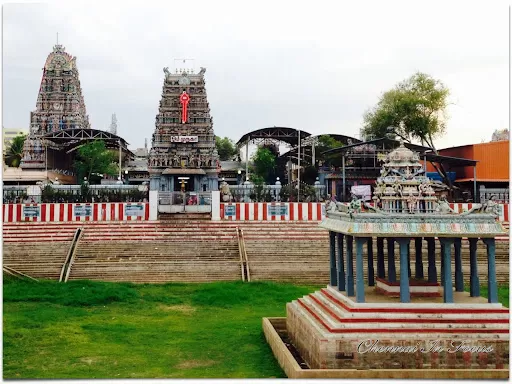
The gopuram:
The gopuram is the towering structure that marks the entrance of the temple. It is 40.8 meters high and has nine tiers. It is adorned with colorful and intricate sculptures of various gods and goddesses, as well as scenes from Hindu mythology. The gopuram was built in 1920 and renovated in 2015. It is a landmark of Vadapalani and a symbol of the glory of the temple.
The idols:
The idols are the main objects of worship in the temple. The presiding deity of the temple is Lord Murugan, who is also known as Palani Andavar, as he is made of the same material as the idol in Palani. He is about one foot tall and faces east. He is flanked by his consorts, Valli and Devasena, who are also made of navapashanam. The idol of Lord Murugan is said to be very powerful and responsive to the prayers of the devotees. There are also other idols of Lord Murugan in different forms and postures, such as Shanmuga, Dandayudhapani, Swaminatha, and Singaravelar. Apart from Lord Murugan, there are also idols of Lord Ganesha, Lord Shiva, Goddess Parvati, Lord Hanuman, and other deities in the temple.

The mandapams:
The mandapams are the halls or pavilions where the devotees can sit and meditate, or witness the rituals and ceremonies. There are several mandapams in the temple, such as the rajagopuram mandapam, the maha mandapam, the ardha mandapam, and the kalyana mandapam. The mandapams are decorated with beautiful paintings, carvings, and inscriptions that depict the stories and teachings of Lord Murugan and his devotees. The mandapams are also the venues for various cultural and religious events, such as music concerts, dance performances, discourses, and marriages.
The prakarams:
The prakarams are the circumambulatory paths that surround the sanctum sanctorum of the temple. There are two prakarams in the temple, the inner and the outer. The inner prakaram has 108 steps that lead to the sanctum sanctorum, and it is believed that climbing these steps is equivalent to climbing the Palani hill, where the original temple of Lord Murugan is located. The outer prakaram has a tank, where the devotees can take a dip and purify themselves before entering the temple. The prakarams are also lined with shrines and niches that house various deities and saints, such as the Navagrahas (nine planets), the Nayanmars (63 Shaivite saints), and the Arupadai Veedu (six abodes of Lord Murugan).
Festivals and rituals
The vadapalani murugan temple is also a hub of festivity and celebration, as it hosts many festivals and rituals that honor and worship Lord Murugan and his consorts. Some of the main festivals and rituals that take place in the temple are:

The Skanda Sashti:
The Skanda Sashti is the most important and grand festival of the temple, as it commemorates the victory of Lord Murugan over the demon Tarakasura. It is celebrated in the month of Aippasi (October-November), and lasts for six days. During this festival, the devotees observe fasting, prayer, and penance, and participate in various ceremonies, such as the kavadi, the pal kudam, the vel, and the soorasamharam. The kavadi is a wooden or metal structure that is decorated with flowers, peacock feathers, and images of Lord Murugan, and carried by the devotees on their shoulders as a sign of devotion.
The pal kudam is a pot filled with milk, which is offered to the lord as a symbol of purity. The vel is the spear of Lord Murugan, which is worshipped as a representation of his power and grace. The soorasamharam is the dramatic enactment of the final battle between Lord Murugan and Tarakasura, which culminates in the slaying of the demon by the lord. The Skanda Sashti festival attracts thousands of devotees from all over the country and the world, who come to witness the glory and the miracle of Lord Murugan.
The Panguni Uthiram:
The Panguni Uthiram is another major festival of the temple, as it celebrates the marriage of Lord Murugan with his consorts, Valli and Devasena. It is celebrated in the month of Panguni (March-April), and coincides with the full moon day. During this festival, the idols of Lord Murugan and his consorts are taken out in a procession around the temple, and then placed in the kalyana mandapam, where the wedding ceremony is performed. The devotees offer flowers, fruits, and sweets to the divine couple, and seek their blessings for a happy and prosperous married life. The Panguni Uthiram festival is a joyous and auspicious occasion, as it symbolizes the union of love and devotion.

The Thai Poosam:
The Thai Poosam is another significant festival of the temple, as it marks the birthday of Lord Murugan. It is celebrated in the month of Thai (January-February), and coincides with the star Poosam in the Tamil calendar. During this festival, the devotees offer special prayers and offerings to Lord Murugan, such as the abhishekam (ritual bathing), the archanai (recitation of names), and the aarti (waving of lamps). The devotees also perform various acts of devotion and sacrifice, such as piercing their body parts with needles or hooks, carrying fire pots or chariots, and shaving their heads. The Thai Poosam festival is a demonstration of the faith and the gratitude of the devotees, who seek the protection and the guidance of Lord Murugan.
The Kanda Shasti Kavasam:
The Kanda Shasti Kavasam is a hymn composed by a saint named Devaraya Swamigal in praise of Lord Murugan. It is a powerful and poetic prayer that invokes the blessings and the benevolence of the lord. It is recited daily in the temple, especially during the Skanda Sashti festival. The devotees believe that by chanting the Kanda Shasti Kavasam, they can overcome all the obstacles and difficulties in their lives, and attain the grace and the glory of Lord Murugan.
Timings and Entry Fee of Vadapalani Murugan Temple
The vadapalani murugan temple is open to the public every day, from 5:00 am to 9:00 pm. The entry to the temple is free of charge, and anyone can visit the temple and worship the lord. However, there are some timings and fees for the different pujas and rituals that take place in the temple, such as:

The Usha Kala Puja: This is the first puja of the day, performed at 5:30 am. It involves the waking up of the lord and the offering of milk, honey, and fruits. The fee for this puja is Rs. 10 per person.
The Kalasandhi Puja: This is the second puja of the day, performed at 8:00 am. It involves the bathing of the lord and the offering of flowers, sandalwood, and incense. The fee for this puja is Rs. 25 per person.
The Uchikala Puja: This is the third puja of the day, performed at 12:00 pm. It involves the feeding of the lord and the offering of rice, sweets, and savories. The fee for this puja is Rs. 50 per person.
The Sayaratchai Puja: This is the fourth puja of the day, performed at 6:00 pm. It involves the dressing of the lord and the offering of lamps, camphor, and cloths. The fee for this puja is Rs. 75 per person.
The Arthajama Puja: This is the fifth and the last puja of the day, performed at 8:30 pm. It involves the putting of the lord to sleep and the offering of betel leaves, nuts, and fruits. The fee for this puja is Rs. 100 per person.
The devotees can also perform other special pujas and rituals in the temple, such as the kavadi, the pal kudam, the vel, the abhishekam, the archanai, and the aarti, for which they have to pay extra fees depending on the type and the duration of the service. The devotees can also book the pujas and rituals online through the official website of the temple, or contact the temple authorities for more details.
The devotees who visit the temple should also follow some dress code and etiquette, such as:
The devotees should wear clean and modest clothes that cover their shoulders and knees. They should avoid wearing shorts, skirts, jeans, t-shirts, or any other inappropriate attire.
The devotees should remove their footwear and leave it outside the temple premises. They should also wash their hands and feet before entering the temple.
The devotees should not carry any leather items, such as belts, wallets, bags, or jackets, inside the temple. They should also not carry any electronic items, such as mobile phones, cameras, or laptops, inside the temple.
The devotees should not touch or disturb the idols, the sculptures, the paintings, or any other sacred objects in the temple. They should also not take any photographs or videos of the temple or the deities without permission.
The devotees should maintain silence and respect in the temple. They should not talk loudly, laugh, or joke in the temple. They should also not smoke, drink, or eat in the temple.
The devotees should follow the instructions and the guidance of the temple staff and the priests. They should also not argue or fight with anyone in the temple.
The devotees who follow these rules and regulations will have a pleasant and peaceful experience in the temple, and will receive the blessings and the favors of Lord Murugan.
How to Reach Vadapalani Murugan Temple
The vadapalani murugan temple is located in Vadapalani, a suburb of Chennai, in the state of Tamil Nadu, India. It is easily accessible by various modes of transport and routes, such as:
By bus:
The temple is well connected by bus services from different parts of the city. The nearest bus stop is the Vadapalani Bus Terminus, which is about 500 meters away from the temple. The bus routes that pass through this bus stop are 12B, 12G, 17D, 17E, 17K, 25G, 37D, 49A, 70, and 70A. The bus fare ranges from Rs. 5 to Rs. 15 depending on the distance and the type of bus.
By train:
The temple is also well connected by train services from different parts of the city. The nearest railway station is the Mambalam Railway Station, which is about 3 km away from the temple. The train routes that pass through this station are the Chennai Beach-Tambaram, the Chennai Beach-Chengalpattu, and the Chennai Beach-Tirumalpur. The train fare ranges from Rs. 5 to Rs. 10 depending on the distance and the type of train.
By metro:
The temple is also well connected by metro services from different parts of the city. The nearest metro station is the Vadapalani Metro Station, which is about 1 km away from the temple. The metro route that passes through this station is the Blue Line, which connects Chennai Central to St. Thomas Mount. The metro fare ranges from Rs. 10 to Rs. 40 depending on the distance and the type of metro.
By auto:
The temple can also be reached by auto rickshaws, which are a common and convenient mode of transport in the city. The auto rickshaws can be hailed from any part of the city, and they charge according to the meter or the negotiation. The average auto fare from the nearest bus stop, railway station, or metro station to the temple is about Rs. 50 to Rs. 100 depending on the traffic and the time of the day.
By taxi:
The temple can also be reached by taxis, which are another comfortable and reliable mode of transport in the city. The taxis can be booked online or offline, and they charge according to the meter or the package. The average taxi fare from the nearest bus stop, railway station, or metro station to the temple is about Rs. 100 to Rs. 200 depending on the traffic and the time of the day.
Places to Visit Near Vadapalani Murugan Temple
The vadapalani murugan temple is not only a spiritual and cultural destination, but also a gateway to many other attractions and landmarks that are located close to the temple. Some of the places to visit near the temple are:

The Forum Vijaya Mall:
The Forum Vijaya Mall is one of the largest and the most popular shopping malls in Chennai. It is located about 1 km away from the temple, and it offers a wide range of products and services, such as fashion, electronics, entertainment, food, and leisure. The mall has over 100 stores, including international and national brands, such as H&M, Lifestyle, Marks & Spencer, Pantaloons, and Shoppers Stop. The mall also has a multiplex cinema, a gaming zone, a food court, and a hypermarket. The mall is open from 10:00 am to 10:00 pm every day, and the entry is free of charge. The mall is a perfect place to indulge in some retail therapy and have some fun with family and friends.

The Kamala Cinemas:
The Kamala Cinemas is one of the oldest and the most popular movie theaters in Chennai. It is located about 2 km away from the temple, and it showcases the latest and the best movies in Tamil, Hindi, and English languages. The theater has four screens, with a seating capacity of over 2000 people. The theater also has a cafeteria, a parking lot, and a ticket counter. The theater is open from 10:00 am to 11:00 pm every day, and the ticket price ranges from Rs. 50 to Rs. 200 depending on the show time and the seat category. The theater is a perfect place to enjoy some entertainment and relaxation with family and friends.

The Valluvar Kottam:
The Valluvar Kottam is a monument and a cultural center that honors and celebrates the life and works of Thiruvalluvar, a renowned Tamil poet and philosopher. It is located about 4 km away from the temple, and it consists of a chariot, a hall, and a garden. The chariot is a replica of the one that carries the idol of Lord Murugan in Thiruvarur, and it has a statue of Thiruvalluvar on top of it. The hall is a circular auditorium that can accommodate up to 4000 people, and it has 133 chapters of Thirukkural, the masterpiece of Thiruvalluvar, inscribed on its walls.
The garden is a landscaped area that has various plants and flowers, as well as statues of famous Tamil personalities. The Valluvar Kottam is open from 8:00 am to 6:00 pm every day, and the entry fee is Rs. 10 per person. The Valluvar Kottam is a place to learn and appreciate the rich and ancient Tamil culture and literature.

The Marina Beach:
The Marina Beach is one of the longest and the most beautiful beaches in the world. It is located about 10 km away from the temple, and it stretches for 13 km along the Bay of Bengal. The beach is a popular tourist attraction, as it offers a variety of activities and attractions, such as swimming, surfing, boating, fishing, horse riding, kite flying, and sand art. The beach also has a promenade, a lighthouse, a park, a museum, and a memorial. The beach is open from 5:00 am to 8:00 pm every day, and the entry is free of charge. The beach is a place to enjoy some nature and adventure with family and friends.
The vadapalani murugan temple is a must-visit destination in Chennai, as it offers a unique and unforgettable experience of spirituality, culture, and art. The temple is a testimony to the faith and devotion of millions of people who worship Lord Murugan, the god of war, wisdom, and love. The temple is also a gateway to many other attractions and landmarks that are located close to the temple, such as the Forum Vijaya Mall, the Kamala Cinemas, the Valluvar Kottam, and the Marina Beach. Whether you are a devotee, a tourist, or a curious traveler, you will find something interesting and inspiring in this temple.
So, what are you waiting for? Book your tour to the vadapalani murugan temple today, and discover the glory and the miracle of Lord Murugan.









